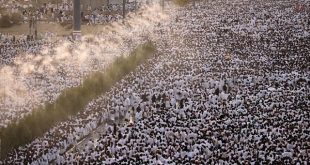 by: Ilay Ileri
by: Ilay IleriAli Al-Qushji was one of the most noteworthy and important scientists in the Islamic world. He wrote valuable works especially on astronomy and mathematics. He was a student and co-worker of the famous statesman and scientist Ulugh Beg. After Ulugh Beg’s death, Ali Al-Qushji left Samarqand to Tabriz where he worked for Akkoyunlu Ruler Uzun Hasan. Afterwards, he worked for the Ottoman Sultan Muhammad II in Istanbul during the last two years of his life. This article presents a short survey of Al-Qushji’s contributions to mathematics and astronomy.
Note of the editor
This article was originally published in Journal of the Center for Ottoman Studies, Ankara University (OTAM), vol. 20/2006, pp. 175-183. We thank the author for having accepted republishing. The article is published onwww.MuslimHeritage.com with a new editing.
Mathematics, medicine and astronomy were the core disciplines of Islamic science in the Ottoman State. There has been a number of works written on these subjects under the Ottomans. Ali al-Qushji was one of the greatest astronomers and mathematicians of the 15th century. He was born in Samarqand at the beginning of the 15th century [1] and died in 1474 in Istanbul. His father was the falconer [2] of the famous ruler and astronomer Ulugh Beg (1394-1449) [3].
Ali al-Qushji was a student and co-worker of Ulugh Beg. Apart from being a successful ruler, Ulugh Beg was deeply interested in science, mathematics and astronomy. He founded The Samarqand Observatory and invited famous scientists of his time to Samarqand.
Before starting to deal with Al-Qushji and his contributions to mathematics and astronomy, it will be better to give some background information about the important observatories in the 15th and 16th centuries in the Islamic World.
2. Samarqand and Istanbul observatories
In the 15th and 16th centuries, the continuation of the tradition of observatory building was witnessed in Islam. There was an important observatory in each one of these two centuries; The Samarqand Observatory in the 15th century and the Istanbul Observatory in the 16th century.
The Samarqand Observatory was of greater importance both as a scientific institution and from the perspective of its historical role. Founded in 1429 by Ulugh Beg [4], the Samarqand Observatory represents the highest and the most successful stage of Islamic achievement in the field of observatory building. It also constituted an important connection between Islam and Europe in the transmission of the tradition of founding observatories. The Samarqand Observatory was circular in shape and had three storeys. It was over 50 metres in diameter and 35 metres high.
 |
|
Figure 2: Ali Al-Qushji presenting his book to Muhammad II. |
Ulugh Beg invited famous scientists of the time to Samarqand and wanted to turn Samarqand into a centre of astronomy and mathematics. Famous scholars of the time such as Ali Al-Qushji, al-Qashi, Kadizade-i Rumi and other mathematicians and astronomers worked at the Observatory.
The 15th century was a period of flowering both in the fine arts and in the cultivation of learning in the northeastern parts of Islam and especially in the region of Turkistan, intellectual activity was fostered by Timur Leng (1369-1405) and his successors. They gave encouragement to scholars and built important Madrasas. Samarqand had become an important cultural centre of Islam during the reign of Timur, and it was also the beginning of a renaissance in Islamic art. Scientific activity gained great momentum in Samarqand during the reign of Ulugh Beg [5].
Istanbul Observatory was founded by Taqi al-Din ibn Ma?ruf during the reign of Sultan Murad III, in Istanbul. Important studies and researches took place at the Observatory. Taqi al-Din ibn Ma?ruf was the founder of the first observatory in the Ottoman State; he was born in Damascus in 1526. After completing his education in Damascus and Egypt, he served as a judge (Qadhi) and professor, during this time he really got into astronomy and mathematics. He arrived to Istanbul in 1570 and he was appointed as Chief Astronomer (Munajjimbashi) in 1571. After meeting with Sultan Murad III through Sokullu Muhammad Pasha, he proposed to build an observatory to have a better zij (astronomical table) than Ulugh Beg’s. The Observatory was partially built in 1577 and Taqi al-Din ibn Ma?ruf started his observations. He built a very precise mechanical clock to make measurements, invented new astronomical instruments to make various calculations in Istanbul Observatory and wrote the first book in the Ottoman State about mechanical machines. The instruments in the Observatory were as follows: armillary sphere, mural quadrant, azimuthal semicircle, triquetrum, dipotra and sextant. However, the Observatory was demolished in 1580 due to political struggles [6].
3. Biographical sketch of Al-Qushji
As mentioned above, Ali al-Qushji was a student of Ulugh Beg and Kadizade-i Rumi as well [7]. He was deeply interested in the fields of mathematics and astronomy. He completed his education in Samarqand and Kirman. After being educated by a well-known scientist of his time, Kadizade-i Rumi, Ali Al-Qushji became the assistant of Ulugh Beg.
 |
|
Figure 3: Ali Al-Qushji’s grave in Eyup Cemetery, Istanbul. |
After the death of Kadizade-i Rumi, Al-Qushji was appointed as the director of Samarqand Observatory; Ulugh Beg appreciated Al-Qushji’s studies on astronomy. In this period, Samarqand was an important centre of science in the first half of the 15th century. Al-Qushji worked hard at the Observatory in order to add new scientific researches to the existing ones, he presented Ulugh Beg with his first written work Risala fi Hall Ashkal Mu’addil al-Qamar li-al-Masir, a treatise on the phases of the moon. Then Ali Al-Qushji and Ulugh Beg collaborated on Zij-i Ulugh Beg/Zij-i Sultani which was an enormous catalogue of the stars and the most important work of his time [8]. In this work, Ali Al-Qushji accurately discussed the distances between the heavenly bodies and the Earth. He worked in this job for about 30 years.
With the assassination of Ulugh Beg by his own son in 1449, Ali Al-Qushji stopped working for the Observatory because Ulugh Beg meant something different for him. Ali Al-Qushji had taken mathematics and astronomy lessons from him and had examined Ulugh Beg’s works for a long time, he had also attended Ulugh Beg’s lectures and worked as his colleague. Therefore, the assassination of Ulugh Beg was vitally painful for Ali Al-Qushji. As a result, he left Samarqand to Tabriz in Iran, in 1449. In Tabriz, Uzun Hasan, the ruler of Akkoyunlu state, respected him and wanted him to act as a good-will ambassador between himself and the young conqueror of Istanbul, Muhammad II. Ali Al-Qushji accepted Uzun Hasan’s proposal and went to Istanbul to perform his ambassadorial duty. When he arrived to Istanbul, he was admitted to appear before Sultan Muhammad II and was complemented by him more than he had expected. The Sultan was deeply interested in positive sciences and requested Ali Al-Qushji to teach in the Madrasas in Istanbul [9]. The development of Madrasas, the educational and scientific institutions of the Ottomans, in the 15th and 16th centuries, greatly influenced the scientific and cultural life. The Madrasas brought political stability and economic well-being to the society. All of these encouraged the best scholars from the Islamic world to come and work in Istanbul. Mathematical sciences such as arithmetic, geometry, algebra, astronomy, natural sciences, classical physics were taught in the Ottoman Madrasas along with the study of divine philosophy and commentary on the Qur’an (tafseer)[10].
Muhammad II’s personality, attitude and reign have a critical importance in terms of scientific life like many other domains. The Sultan had a great interest in religious-philosophical debates and initiated discussions among scholars concerning such subjects [11].
The Ottoman Sultan’s proposal for Ali Al-Qushji to work in Madrasas was an unexpected compliment. Ali Al-Qushji said:
I would like to go back to Tabriz if you let me. The true reason of my existence here is to be the good-will Messenger of Akkoyunlu Ruler, Sultan Hasan. It is necessary for me before I accept the gracious invitation of my Sultan to turn back and inform the person who sent me here and who trusted me that I carried my duty with a good result…’ [12]
This excuse of Ali Al-Qushji seemed reasonable to the Ottoman Ruler. Therefore, Ali Al-Qushji was permitted to return to Tabriz. The distinguished mathematics and astronomy scholar Ali Al-Qushji kept his word. He left Tabriz two years later and was welcomed by the Ottoman ruler in 1472 in Istanbul. It was assumed that some 200 people accompanied Ali Al-Qushji on his way to Istanbul [13].
 |
|
Figure 4: Sample pages from Ali Al-Qushji’s treatise al-Risala al-Fathiyya. |
Ali Al-Qushji came and settled down in Istanbul. Upon his coming, he presented Muhammad II with a book on astronomy written by him in Arabic and entitled al-Fathiyya so named on account of his having completed it on the day on which Muhammad II won the war against Akkoyunlu Sultan, Uzun Hasan. In Istanbul, Ali Al-Qushji established his own school and educated brilliant scholars such as Molla Sari Lutfi, Kiwam al-Din Qasim, Sinan al-Din Yusuf, Hafiz Muhammad ibn Ali. Ali Al-Qushji opened a new era of science and scientific development in the history of the Ottoman State in the 15th century. His works were regarded as invaluable sources of information. Even after his death, his works were studied for a long time. Unfortunately, Ali Al-Qushji was able to work only two years for Muhammad II. His unexpected death in 1474 put an end to the development of astronomy in the State and left the Sultan deprived of his challenging works [14].
Ali Al-Qushji’s most important works in astronomy and mathematics are as follows:
– Risala fi al-Hay’a
This work was written in Persian in 1457. It was one of the most important works of Ali Al-Qushji on astronomy[15].
– Al-Risala fi al-Hisab
Al-Risala fi al-Hisab is a book about arithmetic written in Persian in Samarqand towards the end of 1472 and it consists of 104 folios. The Persian version of the book is different from that of Arabic which has 194 folios. The book deals with calculations and positions of the stars. As to the part ‘Positions of the stars’, it was of great importance for the scholars who were interested in stellar calculations [16].
– Al-Risala al-Muhammadiyya
This is a book on algebra and arithmetic written in Arabic. He wrote this book on his way to Istanbul in 1472. It was presented to the Ottoman ruler, Muhammad II and therefore was given the name Risala al-Muhammadiyya, the exact English translation of which is ‘Muhammad’s Book’. The title of the book shows the deep respect that Ali Al-Qushji had for the Ottoman ruler. The book consists of an introduction and five chapters. It has a richer content than Ali Al-Qushji’s Risala fi al-Hisab which is a book on arithmetic and positions of the stars, because it consists of only three chapters and an introduction and does not contain the charts that Risala al-Muhammadiyya does [17].
– Al-Risala al-Fathiyya
This work of Ali Al-Qushji is about astronomy and written in Arabic in 1473. It was also presented to Muhammad II on the day of his victory in Otlukbeli against Akkoyunlu Ruler, Sultan Hasan. In al-Risala al-Fathiyya, Ali Al-Qushji calculated ‘the inclination of the ecliptic’ and his calculation of ecliptic shows very little difference from today’s value. The book consists in three chapters. The first chapter deals with the number of planets around the Earth, what they are made of and where they are located.
|
|
In the first chapter of the book, it is said that “the Earth is the only one and there are nine planets that surrounds the Earth. They move in an orbit. The sun is fixed and the other planets and heavenly bodies are in orbit around the sun.” This chapter also deals with some big and small planets, the shape, the position and the movement of some of the planets, the position of the unfixed stars, the disagreements on the movements of the stars and planets.
The second chapter is about the shape of the Earth and the classification of the climates. In this chapter, the shape of the Earth was said to be almost round. The climate of the Equator, the orbits of the planets, explanations on years and dates, the rising and setting times of the stars were studied.
The third chapter is about heavenly bodies and clouds. It deals with the calculation of the area of the Earth, the calculation of the radius of the Earth, the ratio of the Moon’s diameter to that of the Earth and information about the planets Mercury and Venus [18].
Apart from all these achievements, Ali Al-Qushji also wrote about theology, religious subjects, linguistics and grammar. When he was working in Istanbul for Muhammad II, he controlled and calculated the degrees of the latitude and longitude at which Istanbul lies. He found the latitude as 41 and longitude as 59which are very close to those of today’s calculations (today’s values are 41.01/58). On the order of Muhammad II, Ali Al-Qushji also constructed a sundial as well [19].
5. Categorisation of his works
In general, Ali Al-Qushji’s works can be categorized under five groups:
1. His works on astronomy
1.1. Sharh-i Zij-i Ulugh Beg
1.2. Risala fi Hall Ashkal Mu’addil al-Qamar li-al-Masir
1.3. Al-Risala fi Asl al-Harej Yumkin fi al-Sufliyyayn
1.4. Sharh ‘ala al-Tuhfat al-shahiyya fi al-Hay’a
1.5. Al-Risala dar ‘ilm al-Hay’a
1.6. Al-Fathiyya fi ‘ilmi al-Hay’a
1.7. Al-Risala fi Halli ashkal al-Qamar
2. His works on mathematics
2.1. Al-Risala al-Muhammadiyya fi al-Hisab
2.2. Al-Risala der ‘ilm-i Hisab
3. His works on Islamic law and the philosophy of Islam
3.1. Al-Sharh al-Jadid ‘alat al-Tajrid
3.2. Hashiya ‘ala al-Talwih
4. His work on mechanical instruments
4.1. Al-Tadhkira fi al-alat al-Ruhaniyya
5. His works on language and rhetoric
5.1. Sharh al-Risala al-Wad’iyya
5.2. Al-Ifsah
5.3. Al-‘Unkûd al-Zawahir fi Nazm al-Jawahir
5.4. Sharhu al-Safiya
5.5. Al-Risala fi Bayani ba’d al-Mufradat
5.6. Fa’ida li-Tahkiki Lami’t-Ta’rif
5.7. Al-Risala ma ana qultu
5.8. Al-Risala fi al-Hamd
5.9. Al-Risala fi ‘ilm al-Ma’ani
5.10. Al-Risala fi Bahth al-Mufrad
5.11. Al-Risala fi al-Fann al-thani min ‘ilm al-Bayan
5.12. Tafsir al-Baqara wa ali ‘Imran
5.13. Al-Risala fi al-Isti’ara
There are some other works that are attributed to Ali Al-Qushji. However, the copies of these works were not found yet. These are Tarihu Ayasofya, Tafsir al-Zahrawayn, Mahbûb al-Hama’il, Al-Risala fi Mawdû’at al-‘Ulûm, Masarrat al-Qulûb fi Daf’i al-Qurûb [20].
The astronomers and mathematicians of Islam had a strong feeling for precision. They were preoccupied with astronomical theory; they were not satisfied with rough and approximate results, but aimed at utilizing the mathematical tools and they insisted on the need for basing their results on observational data as accurate as possible [21].
Soon after Ali Al-Qushji had come and settled in Istanbul upon Muhammad II’s invitation, he made important contributions in mathematics. As a result, the famous astronomer and mathematician Ali Al-Qushji had an important impact on the development of mathematics and astronomy in the Ottoman State. He left valuable works as sources of information after his death in 1474 in Istanbul. He also produced original works in language and rhetoric. In conclusion, we can say that mathematics and astronomy in the Middle Ages were at their peak during the reign of Muhammad II with Ali Al-Qushji’s studies, works and contributions.
Babinger, Franz: Fatih Sultan Mehmet ve Zamani, Trans. Dost Körpe, Oglak Bilmsel Kitaplar Yayincilik, Istanbul 2003.
Çeçen, Kâzim (Editor): Osmanli Imparatorlugu’nun Dorugu, 16. Yüzyil Teknolojisi, Istanbul 1999.
Dizer, Muammer: Ulugh Beg, Kültür Bakanligi, Ankara 1989.
Ihsanoglu, Ekmeleddin, “The Madrasas of the Ottoman Empire”, www.Muslimheritage.com, Manchester, April 2004.
Ipsirli, Mehmet: “The Ottoman Ulema (Scholar)”, www.Muslimheritage.com, Manchester 2004.
Ramazanoglu, Gözde: Ortaasya’da Türk Mimarisi, Kültür Bakanligi, Ankara 1998.
Sayili, Aydin: The Observatory in Islam and Its Place in the General History of the Observatory, Türk Tarih Kurumu, Ankara 1988.
Serbetçi, Muzaffer: Türk Haritaciligi Tarihi, Istanbul 1999.
Ünver, A. Süheyl: Türk Pozitif Tarihi’nden bir Bahis. Ali Al-Qushji Hayati ve Eserleri, Istanbul 1948.
Yildiz, Musa: Bir Dilci Olarak Ali Al-Qushji ve Risale fi’l-Isti’are’si, Ankara 2002.
End Notes
[1] Ali Al-Qushji’s exact date of birth is unknown.
[2] Sahincibasi, a falconer, is a person who trains wild birds such as falcons to catch prays; this is the reason his father was given the nickname ‘Al-Qushji’ meaning ‘falconer’.
[3] For more information see, Franz Babinger, Fatih Sultan Mehmed ve Zamani, Trans. Dost Körpe, Oglak Bilimsel Kitaplar Yayincilik, Istanbul 2003.
[4] Gözde Ramazanoglu, Ortaasya’da Türk Mimarisi, Kültür Bakanligi, Ankara 1998, p. 99. As to the year of the foundation of the Samarqand Observatory, some other sources give different years such as 1420, 1421, and 1428.
[5] Aydin Sayili, The Observatory in Islam and Its Place in the General History of the Observatory, Türk Tarih Kurumu, Ankara, 1988, pp. 259, 312, 260.
[6] For more details see, Kazim Çeçen (Editor), Osmanli Imparatorlugu’nun Dorugu, 16. Yüzyil Teknolojisi, Istanbul 1999.
[7] Aydin Sayili, op. cit. p. 268; Muammer Dizer, Ulug Bey, Kültür Bakanligi, Ankara 1989, p. 49.
[8] Muammer Dizer, op. cit., p. 49.
[9] For more details see, Muzaffer Serbetçi, Türk Haritaciligi Tarihi, Istanbul 1999.
[10] For more details see, Ekmeleddin Ihsanoglu, “The Madrasas of the Ottoman Empire“, published onwww.Muslimheritage.com, Manchester, April 2004. See the full PDF version here.
[11] Mehmet Ipsirli, “The Ottoman Ulema (Scholars)“, www.Muslimheritage.com, Manchester, May 2004, p. 6.
[12] Reference?
[13] A. Süheyl Ünver, Türk Pozitif Ilimler Tarihinden Bir Bahis, Ali Al-Qushji Hayati ve Eserleri, Istanbul 1948, p. 17.
[14] A. Süheyl Ünver, op. cit., Istanbul 1948, pp. 16, 81: Franz Babinger, op. cit., p. 414.
[15] A. Süheyl Ünver, op. cit., p. 36.
[16] A. Süheyl Ünver, op. cit., pp. 37-38.
[17] A. Süheyl Ünver, op. cit., pp. 41-42.
[18] A. Süheyl Ünver, op. cit., pp. 42-46.
[19] A. Süheyl Ünver, op. cit., p. 82.
[20] Musa Yildiz, Bir Dilci Olarak Ali Al-Qushji ve Risale fi’l-Isti’are’si, Ankara 2002, pp. 10-14.
[21] Aydin Sayili, op. cit., p. 312.
* Associate Prof. Dr., Akdeniz University, Faculty of Education, Antalya, Turkey.
 Komashisha
Komashisha



